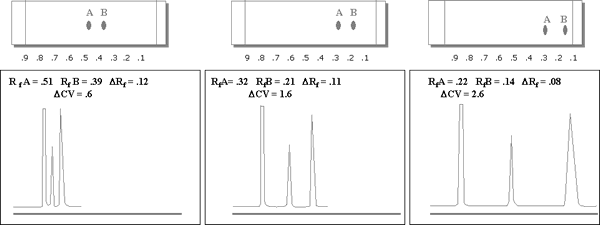
BE THE FIRST TO KNOW
Enter your email below to subscribe to the QLA newsletter to receive timely updates from your favorites products.
Optimizing a separation on TLC is important but it is not the only thing that matters when translating into flash chromatography.
The first step is to obtain a TLC separation with the aim of keeping the retention factor (Rf) values as low as possible.
| Rf | CV |
| 0.90 | 1.10 |
| 0.70 | 1.40 |
| 0.50 | 2.00 |
| 0.30 | 3.33 |
| 0.10 | 10.00 |
TLC data can be used to predict column elution behaviour using the relationship CV = 1/Rf.
CV is the number of column volumes required to elute the component from the column regardless of column dimensions.
Example values of CV for different values of Rf are shown in the table on the left.
In general, the better the separation, the better the sample load capacity of the column. This is illustrated in the diagram below, which shows =CV vs. Rf as predictors of sample load.

This shows that CV plays a greater role in predicting maximum sample loading than Rf.